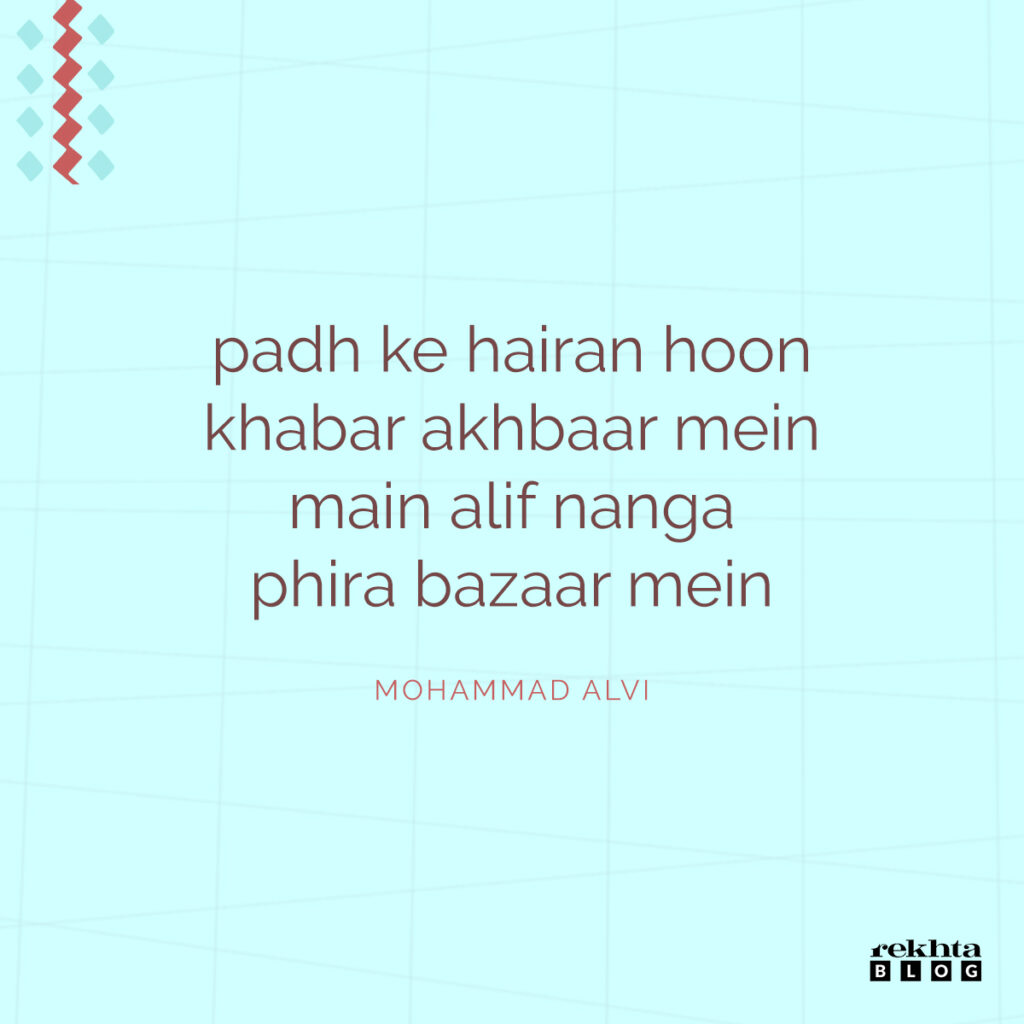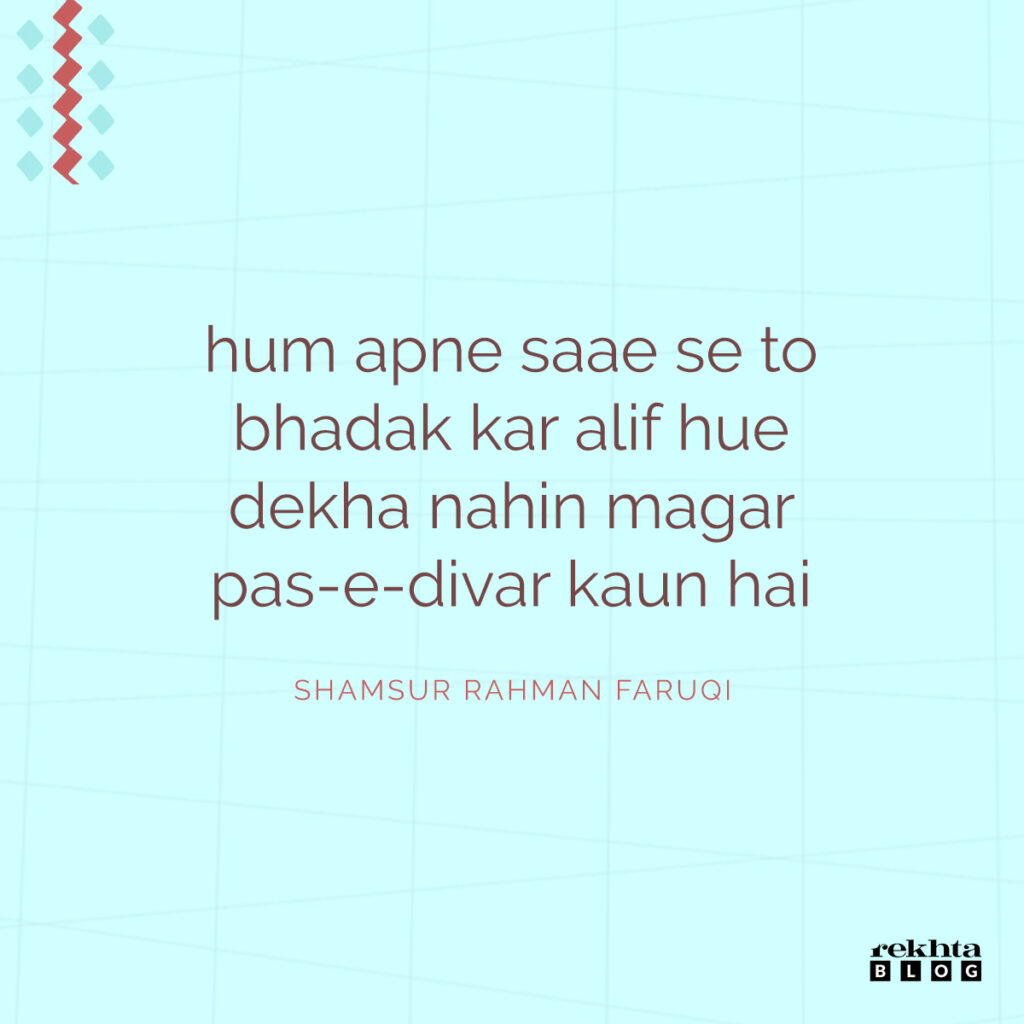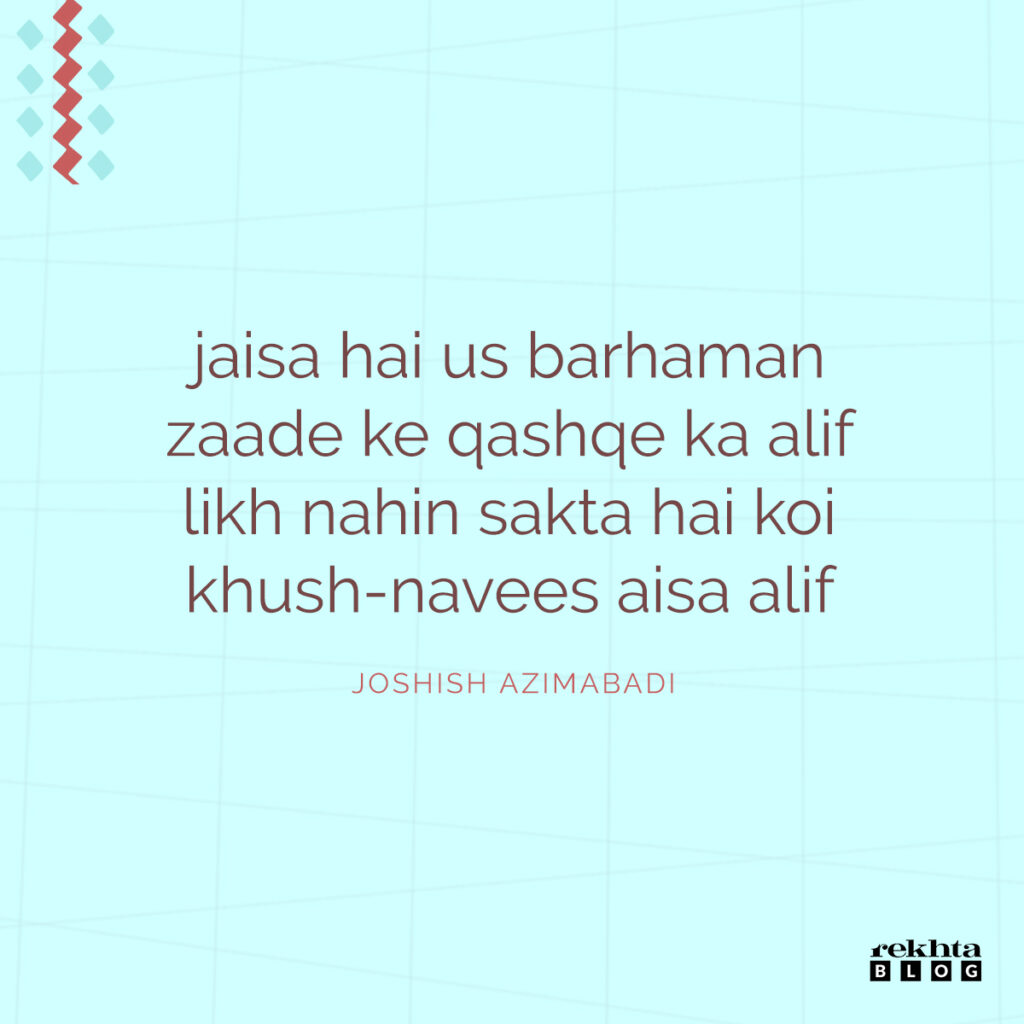
Asraar-e-Huroof: The Story of Alif
Our thoughts are formed of meanings, meanings are embodied in words, and words comprise of alphabets. This blog series, Asraar-e-Huruuf, that is the secrets of alphabets, is all about that last bit, alphabets!
The spotlight in today’s blog is reserved for Alif, the first letter of the Urdu alphabets (Huruuf-e-Tahajji). As we all know, it is the first one in the English alphabetical series, too. Digressing for a moment, notice the word ‘Alphabet’? Well, it, too, is pivotal in unlocking the mystery with letters. The word ‘Alpha’ is the first letter of the Greek alphabet which denotes ‘A’, followed by ‘Beta’ denoting ‘B’, and so on. Therefore, the word alphabet is in itself an abbreviation of its components!
Coming back to Alif, it’s a really interesting character. But before we dive into its many meanings, let us reintroduce ourselves to its very nature. Any alphabet, in its essence, is a sound, a sound that carries an aspect, an emotion, and an identity. Alif echoes the sound ‘a’, as in the word ‘but’. In Devanagari, it’s written as “अ”. But to understand how monumental this little aspirant-letter is in the grand scheme of things, let us consider the following verse from the Bhagavad Gita:
अक्षराणामकारोऽस्मि द्वन्द्व: सामासिकस्य च |
अहमेवाक्षय: कालो धाताहं विश्वतोमुख: || ||
Of letters I am ‘a’. Of compounds I am the dual.
I alone am unending time, the Founder facing every side.
Among the Sanskrit alphabets, the letter ‘a’ has a distinguished rank, firstly, because all other alphabets are formed by using it. For Instance, क् + अ = क (k + a = ka), and so on; thus, it is taken as one-half of all the remaining letters. Basically, ‘अ ’ is considered the creator of all other sounds and letters.
Secondly, when prefixed, ‘अ ’ also denotes negation or privation, identical to the Persian ‘Be’, and the Arabic ‘Laa’. The word ‘Kaal’ that appears in the second line of the verse above means time, but it also means death. Therefore, ‘अ ’ establishes itself as the only sound which is responsible for both creation and destruction. Its significance is such that Krishna finds it analogous to Himself!
Getting back to Alif, now that we are acquainted with what its sound sounds like, we can move on to knowing how it looks. Yes, appearance matters!
Nothing more than a neat vertical dash of the pen- ا -this is how Alif is written. Interestingly, some of the meanings attributed to this alphabet are a direct result of its figure. As you might have guessed, it looks similar to the digit ‘1’, and for the same reason, represents the number one in arithmetic. However, its meanings have compounded over time and, thanks to poets, have become one too many!
Alif also alludes to an unmarried man, and by extension and implication, poets have versified it in the sense of ‘tanhaa’, that is alone, single; friendless. Take a look at the following verse:

Another interesting meaning credited to Alif is that of a prop or support, that is a Takiyah, or loosely a Kursi. Wondering why? Simple, since vowel sounds in Urdu words are often denoted by diacritical marks- known as Aerab (Zer, Zabar, and Pesh)- the Alif which carries the weight of their sound adopted the meaning of something that supports. But this meaning of Alif is largely limited to writing and calligraphy. Colloquially, this meaning is best retained in the following phrase, ‘Alif bana diya hai usko’, that is one who is exploited of used for one’s own ends.
Speaking of colloquialism, when compounded with verbs, the phrase ‘Alif hona’ insinuates being erect or standing up. Again, thanks to the letter’s sleek and straight look:

Revising what we learned above- “when prefixed, ‘अ ’ also denotes negation”- Alif, too, sometimes behaves the same way. Words like Jumbaan (Moving) can become ‘a-jumbaan’, or motionless. But this is something that happens rarely. A more relatable example of this privation is the word ‘agar’, which is a product of ‘Alif’ and ‘gar’, meaning ‘if’.
Unsurprisingly, Alif possesses another distant yet not too far-fetched meaning in its extensity. It also means a religious or sectarian mark on the forehead, that is a ‘Teeka’, or a ‘Qashqa’, again, owing to its shape which is so markedly identical. Here’s a verse that remarkably makes use of this meaning:

I second that you really read the above Ghazal by Joshish Azimabadi, he really has used this alphabet in a host of different ways going well beyond its range of dictionary meanings. It’s just a click afar at Rekhta.
Intriguing, isn’t it, how even alphabets- not even proper words- camouflage a gamut of different meanings? Well, that’s how a language learns to walk and complete its journey; the journey mapped in the first line of this blog.
Drop in your thoughts about this series, and, of course, if you happen to possess any more insights about the letter Alif, do share them in the comment section below.
NEWSLETTER
Enter your email address to follow this blog and receive notification of new posts.




